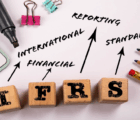
Environmental, social and governance (ESG) values have been at the core of the insurance industry’s DNA for decades, but these principles have been more formally structured and institutionalized in the last decade. This has provided actuaries the opportunity to apply our innovation and expertise in new and expanded ways within and outside the insurance industry to help build a more resilient, sustainable and inclusive society.
The virtual 2022 CAS Ratemaking, Product and Modeling Seminar featured a concurrent session focusing on ESG and what it means for actuaries. Victor Bhagat of AM Best presented an overview of ESG and its impact on insurers’ financial strength. Andy Tran, ACAS, of Swiss Re America then presented examples of how ESG can be embedded to help shape underwriting and product strategy.
Bhagat opened with a clear definition of ESG and the wide breadth of factors under this broad umbrella:
- Environmental factors relate to resource use, pollution, climate risk, energy use, waste management and other physical environmental challenges and opportunities.
- Social factors relate to how a company interacts with the communities in which it operates and with its suppliers, employees and broader stakeholders.
- Governance factors relate to policies and procedures such as corporate governance, corporate behavior, transparency, board composition and business ethics.
The United Nations Environment Programme Finance Initiative (UNEP FI) drafted the four Principles for Sustainable Insurance (PSI). This is the largest collaborative initiative between the U.N. and the insurance industry, with over 140 organizations worldwide adopting the Principles. The Principles serve as a global framework for the insurance industry to address ESG risks and opportunities. In March 2021, AM Best became a signatory of the PSI and adopted the four Principles for Sustainable Insurance listed below.
- Principle 1: We will embed in our decision-making environmental, social and governance issues relevant to our insurance business.
- Principle 2: We will work together with our clients and business partners to raise awareness of environmental, social and governance issues; manage risk; and develop solutions.
- Principle 3: We will work together with governments, regulators and other key stakeholders to promote widespread action across society on environmental, social and governance issues.
- Principle 4: We will demonstrate accountability and transparency in regularly disclosing publicly our progress in implementing the Principles.
ESG is important to the health and well-being of an insurance company in honoring its commitments to its stakeholders, including policyholders, employees, stockholders and regulators. In addition, rating agencies like AM Best consider ESG factors within the broad range of qualitative and quantitative criteria to perform credit analysis and financial credit ratings of insurance companies. Bhagat concluded his portion of the session by sharing multiple examples of the complexities and interactions AM Best must consider in assigning financial credit ratings across a wide range of scenarios.
Tran started his presentation by discussing how Swiss Re considers ESG alongside sustainability and sustainable development goals (SDGs) for their underwriting and product strategy. They begin from this sustainability mission statement:
We aim to meet the needs of the present without compromising the ability of future generations to meet theirs. We do so by taking a strategic and forward-looking view, and by considering our economic, environmental and social impacts.
The mission is integrated alongside ESG and the 17 U.N. SDGs to identify areas for business opportunities while working to meet Swiss Re’s commitment to net-zero greenhouse gas emissions in operations by 2030 and across the entire business by 2050.
Swiss Re integrates sustainability into underwriting at the deal and portfolio level, Tran explained. This includes ESG risk assessment and underwriting referral tools for new business applications, as well as policies on human rights and environmental protection. They must always ask themselves the question: “How does the business we write impact, support or detract from sustainability because sustainable business is good business in the long run?”
To perform their portfolio assessment, Swiss Re actively scores all assumed business across the 17 SDGs, mapping its contribution and harm toward overall sustainability goals. Tran shared an illustrative product development example. E-bikes are growing in popularity in Japan, so Swiss Re developed an e-bike insurance product to meet the market demand. They quantified the sustainability for the individual product and how it contributed favorably to their overall metrics.
Tran closed by describing three ways actuaries can contribute to ESG and sustainability efforts:
- Data — Challenge ourselves. Where can we find nontraditional sources?
- Skill set evolution — We cannot do this alone. We need to work with a cross-functional mindset.
- Model development — A faster feedback loop and responsive stakeholder engagement are crucial.
Together, we can successfully achieve our business goals, including ESG and sustainability objectives.
Dale Porfilio, FCAS, MAAA, is chief insurance officer for the Insurance Information Institute.













